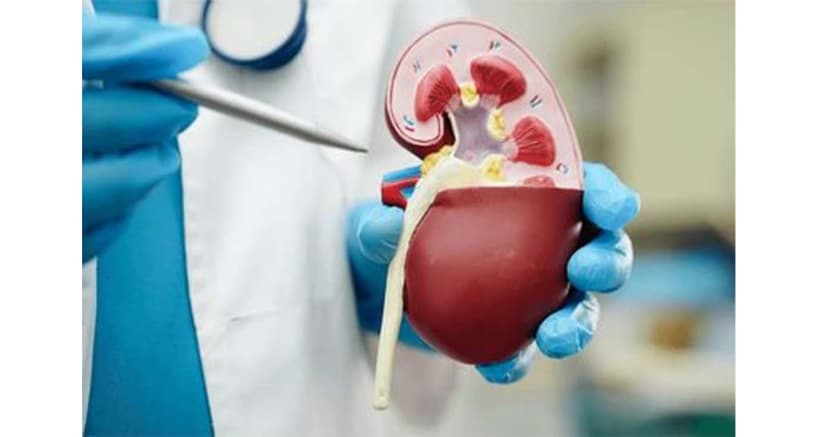Understanding Otitis Media: Causes, Symptoms, and Treatment Options
By:
Apex Hospitals
22-07-2023 5 Min Read

Introduction to Otitis Media
Otitis media is a common condition that affects people of all ages, but children are more susceptible to ear infections than adults. This condition occurs when the middle ear becomes infected by bacteria or viruses. The middle ear is the part of the ear behind the eardrum. It contains the three small bones that transmit sound waves from the eardrum to the inner ear.
Winter and early spring are peak seasons for middle ear inflammation. Middle ear inflammations typically resolve without treatment. Nonetheless, you should seek medical attention if the discomfort persists or if you develop a fever.
Understanding Otitis Media: Causes and Risk Factors
Otitis media is caused by bacteria or viruses that enter the middle ear through the Eustachian tube. The Eustachian tube is a small tube that connects the middle ear to the back of the throat. When the Eustachian tube becomes blocked, it can cause fluid buildup in the middle ear. This buildup of fluid can then become infected.
Some of the risk factors for otitis media include:
- Age: Children are more prone to develop otitis media than the adults
- Having a family history of ear infections
- Exposure to second-hand smoke
- Allergies
- Blockage of the Eustachian tube due to cold or sinus infection
Types of Otitis Media
There are several types of otitis media. The most common types include:
- Acute otitis media: This short-term infection causes sudden onset of symptoms such as ear pain, fever, and hearing loss.
- Chronic otitis media: This is a long-term infection that can cause permanent hearing loss and damage to the middle ear
- Otitis media with effusion: This is a condition where fluid builds up in the middle ear without any signs of infection.
Symptoms of Otitis Media
The otitis media symptoms media can vary depending on the type and severity of the infection. Some of the most common symptoms include:
- Ear pain
- Fever
- Hearing loss
- Drainage from the ear (Yellow or brown coloured)
- headache
- dizziness or vertigo
- nausea or vomiting
Symptoms in infants and children
Since small children and infants can’t always communicate their symptoms, it’s important to recognize the signs. A child with an ear infection may:
- Start rubbing or tugging on their ears
- Cry more than usual or become irritable.
- Have a fever between 38 and 40 degrees Celsius (100.5 to 104 degrees Fahrenheit).
- Start mouth breathing or snore more frequently. Mouth breathing could be a sign of enlarged adenoids. Adenoids are small tissue pads located above the back of the throat, behind the nostrils, and close to the eustachian tubes. The same viruses or bacteria that cause ear infections can also infect and inflame the adenoids.
- Refuse to eat food while being fed
Complications of Untreated Ear Infection
If left untreated, otitis media can lead to several complications. Some of these complications include:
- Hearing loss
- Speech Delays in Children
- Perforation of the eardrum
- Meningitis
- Facial nerve paralysis
- Mastoiditis (Infection of the bone behind the ear)
Diagnosis of Otitis Media
A healthcare provider will perform a physical exam and ask about symptoms to diagnose otitis media. The provider may also use an otoscope to look inside the ear and check for signs of infection. A hearing test may also be performed to check for hearing loss. The physician may also conduct tympanometry to determine if the middle ear is functioning adequately and if Otitis Media Effusion is present.
For this examination, a device is inserted into the auditory canal to alter the pressure and cause the eardrum to vibrate. The test monitors and graphs change in vibration levels. This will indicate the presence of fluid but not its infectiousness. A clinician will interpret the results.
Treatment Options for Otitis Media
The otitis media treatment depends on the type and severity of the infection. Some of the most common treatment options include:
- Antibiotics: These are used to treat bacterial infections
- Pain relievers: These can help relieve ear pain and fever
- Decongestants: These can help relieve congestion and reduce swelling in the Eustachian Tube.
- Ear drops can help relieve pain and reduce inflammation in the ear.
How Long Do Ear Infections Last?
The duration of an ear infection can vary depending on the type and severity of the infection. Acute otitis media usually lasts for a few days to a week. Chronic otitis media can last for several weeks or months.
Prevention of Otitis Media
- Getting vaccinated: Vaccines can help prevent infections that can lead to otitis media.
- Avoiding second-hand smoke: Exposure to second-hand smoke can increase the risk of ear infections.
- Practicing good hygiene: Washing hands frequently and avoiding close contact with people who are sick can help prevent the spread of infections.
- Treating Allergies: Allergies can cause Eustachian tube blockage, leading to ear infections.
Some of the ways to prevent otitis media include:
Otitis Media in Children: Why Kids Get Ear Infections
Children are more likely to develop otitis media than adults. Children have smaller Eustachian tubes, which can become blocked more easily. Other factors that can increase the risk of ear infections in children include:
- Attending daycare
- Exposure to second-hand smoke
- Bottle feeding instead of breastfeeding
- Having a family history of ear infections
- Having a weakened immune system.
If you or your child develop otitis media symptoms, seeking medical attention immediately is essential. Most otitis media cases can be successfully managed with prompt diagnosis and treatment.
Related Articles
Connect with Us
Health in a Snap,
Just One App.
Know more




































































































